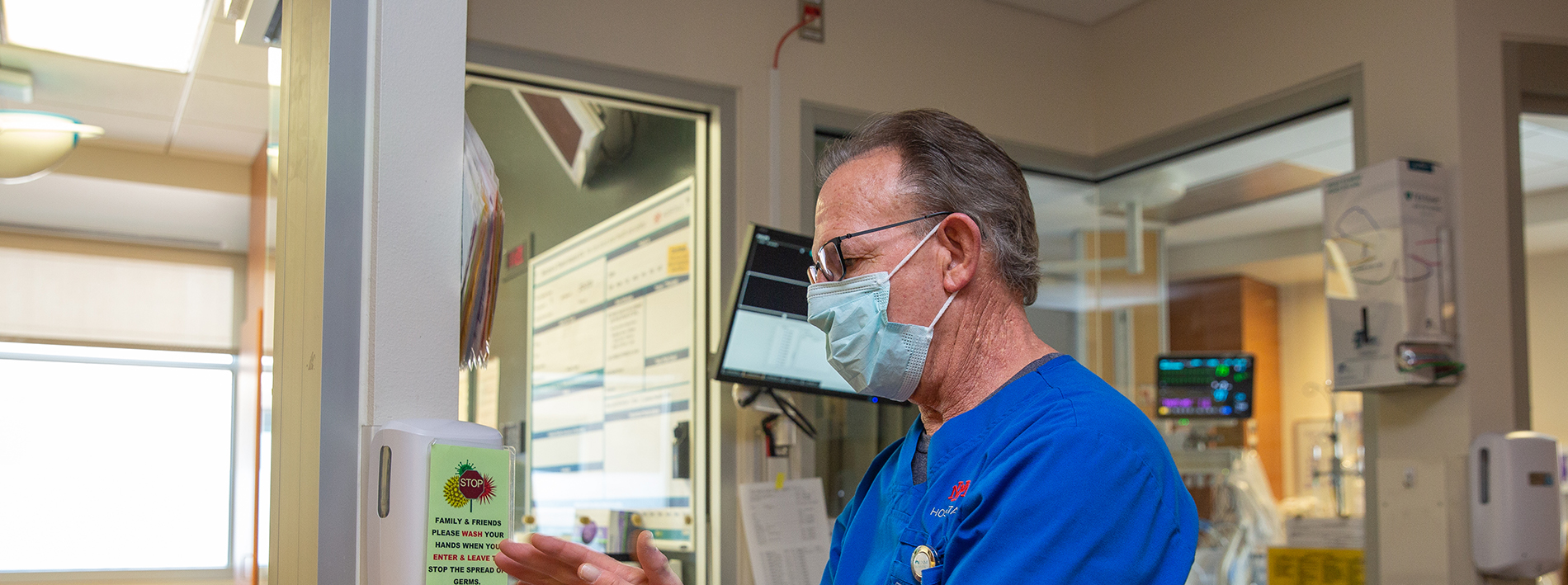Preparing for Disaster: UNM Hospital Participates in Region-Wide Emergency Training

Disinfection Disappointment
Dry Heat Exposure Does Not Reliably Eliminate SARS-CoV-2 From N95 Masks, UNM Study Finds
The well-documented shortage of critical personal protective equipment (PPE) early in the COVID-19 pandemic triggered urgent efforts to find effective ways to disinfect N95 masks and other protective gear for reuse.
Many hospitals turned to proven methods, such as exposing the masks to ultraviolet light, vaporized hydrogen peroxide or moist heat, but not every institution had the proper equipment on hand to do that.
UNM scientists D.J. Perkins, Steven Bradfute and their colleagues in the Center for Global Health wondered whether simply exposing masks to dry heat – an inexpensive process – might succeed in killing the SARS-CoV-2 virus. “It would be wonderful,” says Perkins, a professor and the center’s director. “Many hospitals have dry heat ovens.”

We started out with a pretty high dose of virus
The team recently published a paper in the journal Experimental Biology and Medicine 2021 reporting that exposing masks to dry heat at temperatures as high as 75 degrees Celsius – about 167 degrees Fahrenheit – is not an effective method for eradicating the virus on N95 masks.
The researchers tried several approaches. One involved cutting masks up into small pieces and treating them with a solution containing varying dosages of the coronavirus, then placing them either on parchment paper or in the wells of plastic tissue culture plates before exposing them to heat.
“We started out with a pretty high dose of virus,” says Bradfute, an assistant professor who runs a Biosafety Level 3 laboratory. The virus was not eliminated in the samples placed on parchment paper, but dry heat did prove effective on the mask pieces on the tissue culture plates.
Those results suggested that transfer of heat through the material on which the N95 samples were placed has a significant impact on the ability to inactivate the virus, the study found.

It’s honest data. We repeated it many times
The team then sought to mimic an actual decontamination procedure by suspending intact N95 masks in a heat chamber, but after an hour at high temperature, detectable levels of the virus remained.
Finally, the researchers tried simply storing N95 samples at room temperature for five days but found that the coronavirus persisted in some of the samples. However, because the virus was eliminated in some of the samples, “It is possible that a longer incubation period (for example, 7–10 days) could result in complete inactivation,” the researchers said.
Bradfute notes that heating masks in a liquid solution is a proven method for disinfection and speculates that the way the viruses disperses within the fibers of a mask may enable some to survive the dry heat treatment.
Although the results were disappointing, Perkins says reporting negative results is worthwhile, because it contributes to the growing body of knowledge about the virus.
“It’s honest data,” he says of the experimental findings. “We repeated it many times.”